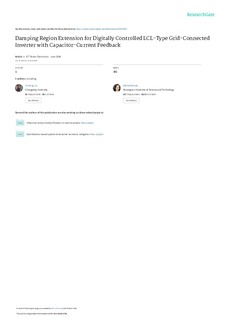Damping region extension for digitally controlled LCL-type grid-connected inverter with capacitor-current feedback
Abstract
This study investigates the extent to which the damping region of a digitally controlled LCL-type grid connected inverter is influenced by the ratio between sampling and switching frequencies, the grid impedance variation and changes in the LCL filter. Based on this analysis, an improved capacitor-current feedback is proposed to preserve stability by extending the damping region under the critical conditions identified. The attention is focused on the case when the switching frequency is higher than one-half of the sampling frequency, which is not covered in the existing literature. In this case, the undamped region is obviously expanded and a conventional capacitor-current feedback will not provide sufficient damping region. An improved capacitor-current feedback active damping method is proposed to increase the system critical frequency greatly and to obtain a wider damping region for all possible LCL resonances. With a reasonable parameter design, the extended system damping region is able to cover almost all possible resonance frequencies even when the switching frequency is the same as sampling frequency. A high robustness to grid-impedance variation is achieved in the system as a result of this improved feedback control. The effectiveness of the theoretical analysis and proposed method is verified by the experimental results.
